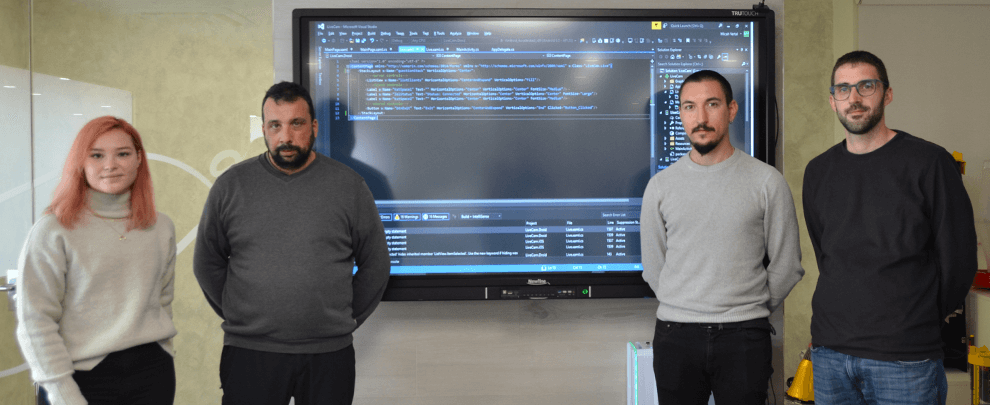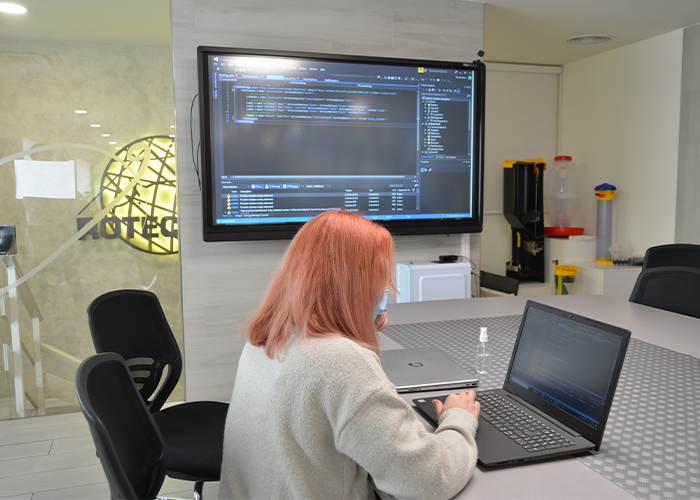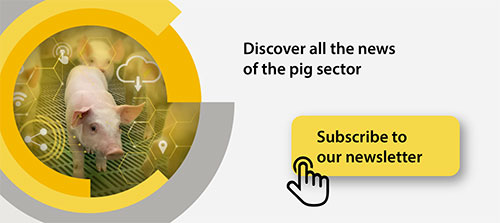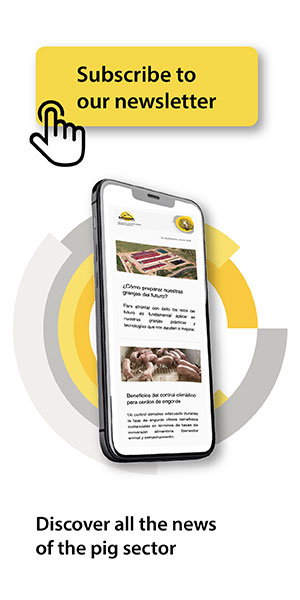Blog
Blog

Rotecna innovates with the creation of a new software department
05th January 2021 - News
The pig sector professionalisation in Spain in recent years has led to the implementation of new technologies on farms as a tool to optimise and increase production figures. The so-called precision livestock is already a reality in the pig sector, where, for example, we work with electronic feeding systems that allow us to know at all times that a specific animal has eaten, which is the most suitable feeding curve for sows so that their body state is optimal throughout their reproductive cycle, avoid wasting food, etc.
Faced with this reality, and with the evolution margin that these technologies offer for companies such as Rotecna, which is dedicated to manufacturing equipment for pig farms, has created a new Software department that works to improve the daily user experience that the farmer has with these electronic products.
Jaume Balcells, the coordinator of this new department at Rotecna, explains: "When Rotecna created the first version of the Dositronic in 2017, the electronic feeding system for sows, the product's design was approached from a hardware point of view: sensor, dispenser, nodes..., but the software part (usability), even though it developed with great passion, analysing the competition and listening very carefully to the needs of the breeders, it was done without precise and defined procedures. Now, with the creation of the department, we intend to continue giving the farmer a say, but filtering the information better, establishing processes and shaping the software products so that everything is coherent and has a reason for being done". In this sense, Jaume assures that "products such as Dositronic have little room for improvement in terms of their functionality since they fulfil the function for which they were created very well. Instead, regarding the desktop program, application for PDA, mobiles..., improvements can always be made so that the farmer has a better user experience. ".
The team
Currently, four people are part of Rotecna's Software department, which also counts on the collaboration of other company technicians, electronic product developers, as well as collaborating companies in the internet of things sector.
Thus, the department has three developers: Jordi Lanchas, a computer engineer, who has the most senior profile of all and specialises in software development, explicitly in databases and desktop software; Rebecca Sarac, a cross-platform application development technician, who deals with apps and program web development; and, Pau Prenafeta, cross-platform application development technician and computer student, who is focused on developing desktop programs. Finally, Jaume, with a master's degree in electronic engineering, is the coordinator of the department and the person who determines the requirements and objectives to be achieved in the different project's development.

Working in software development. Photo: Rotecna.
SCRUM working methodology
The Software department works with a new work methodology called SCRUM, which consists of applying acceptable practices when working as a team and collaborating, and pursues the objective of giving agile responses to processes that are continually changing, such as creating software. "That is why we set goals every two weeks, to be able to respond to the constant change of priorities that we experience," says Jaume.
"We work with different roles. Apart from the department members, we collaborate with other company technicians, "explains Jaume, adding: "in this way, there is the "product owner" that is in charge of being the client's spokesperson. He is the one who acts as a bridge between farmers and developers. Their task is to take note of the needs that farmers convey, define the necessary functionalities, order priorities and negotiate the program's terms and functions with the software team. Then we have software colleagues, who are on the development team, who create the code, and finally, I participate as coordinator and, if needed, a colleague from the technical office will too".
Fortnightly, everyone involved in a project meet in meetings they call "sprint reviews" to review what had to be done in the last two weeks. Then a second meeting is held, called "sprint planning", where the objectives to be achieved in the coming days are defined. "Cyclically we are having meetings, setting objectives and reviewing them," explains Jaume, who is in charge of coordinating the different parties involved so that the methodology works.
Finally, the department plans to do two or three software reviews/updates a year. "We will always work to do them on the same dates so that customers know when we make them and update their software," he adds.
Projects
Improving the user experience of a successful product such as Dositronic is currently one of the department's main tasks. "We are developing changes to the Dositronic's desktop program that allows us to create feeding strategies for animals, monitor that everything is working properly, and analyse consumer data and other farm parameters," explains Jaume. On the other hand, work is being done on the PDA application, which allows the farmer to carry out operations that he would have to do on the computer, but in the same maternity place or the gestation pens, with the reading of the sow's marker. Finally, the department is working on the development of an entirely new web-based product, which cannot yet be publicised.
The potential of these products and the application of precision livestock farming has a long journey ahead. "We see that many more products can be created in this area than we have today. The experience that the people who are working with these products will gain will lead us to develop other products that we cannot imagine now, "concludes Jaume.








